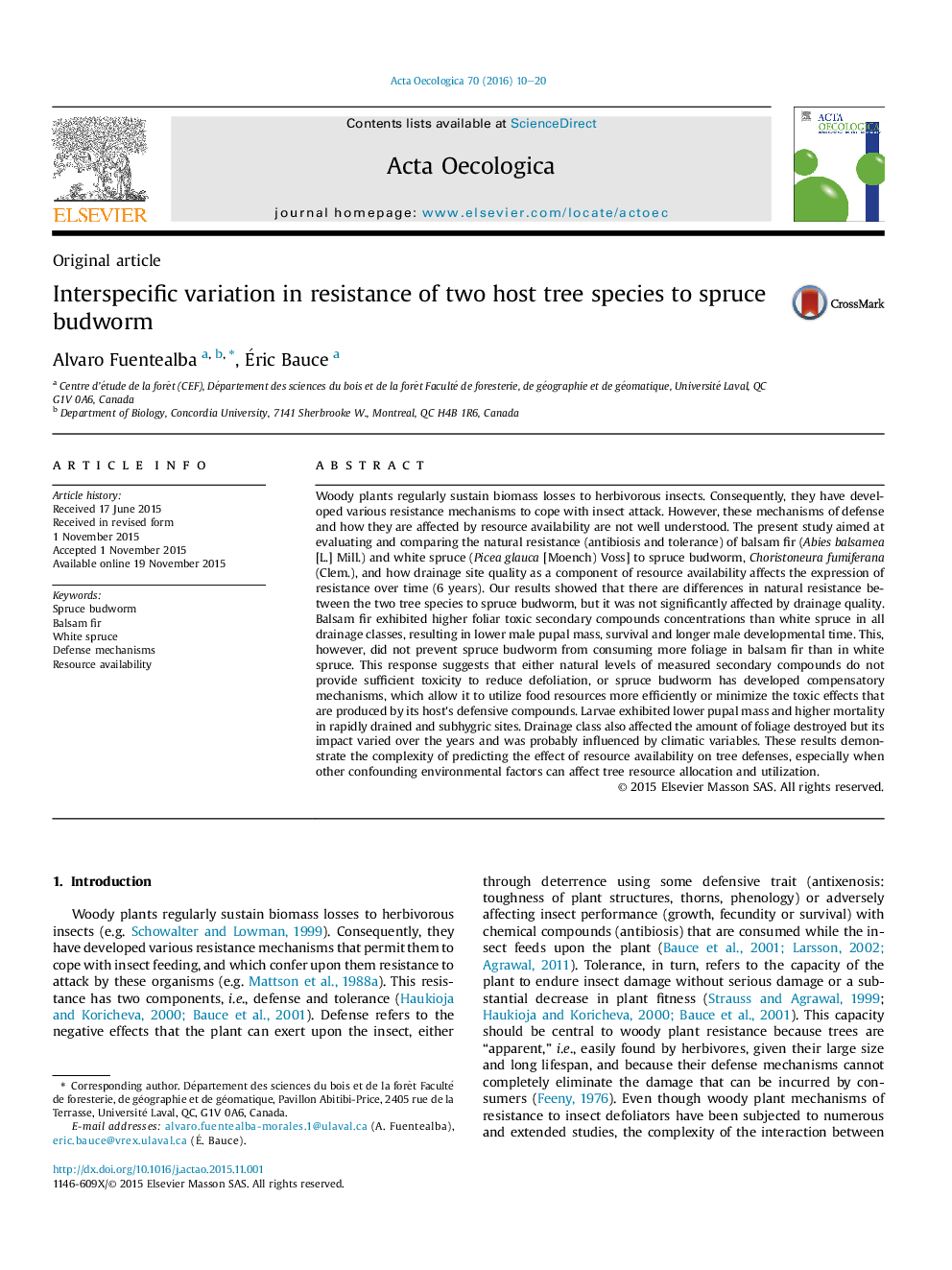| Article ID | Journal | Published Year | Pages | File Type |
|---|---|---|---|---|
| 4380795 | Acta Oecologica | 2016 | 11 Pages |
•We evaluated natural resistance of two host tree species to spruce budworm.•Balsam fir exhibited higher concentrations of foliar toxic secondary compounds than white spruce.•This did not prevent spruce budworm from consuming more foliage in balsam fir.•Tolerance, in contrast, did not differ between the two host tree species.
Woody plants regularly sustain biomass losses to herbivorous insects. Consequently, they have developed various resistance mechanisms to cope with insect attack. However, these mechanisms of defense and how they are affected by resource availability are not well understood. The present study aimed at evaluating and comparing the natural resistance (antibiosis and tolerance) of balsam fir (Abies balsamea [L.] Mill.) and white spruce (Picea glauca [Moench) Voss] to spruce budworm, Choristoneura fumiferana (Clem.), and how drainage site quality as a component of resource availability affects the expression of resistance over time (6 years). Our results showed that there are differences in natural resistance between the two tree species to spruce budworm, but it was not significantly affected by drainage quality. Balsam fir exhibited higher foliar toxic secondary compounds concentrations than white spruce in all drainage classes, resulting in lower male pupal mass, survival and longer male developmental time. This, however, did not prevent spruce budworm from consuming more foliage in balsam fir than in white spruce. This response suggests that either natural levels of measured secondary compounds do not provide sufficient toxicity to reduce defoliation, or spruce budworm has developed compensatory mechanisms, which allow it to utilize food resources more efficiently or minimize the toxic effects that are produced by its host's defensive compounds. Larvae exhibited lower pupal mass and higher mortality in rapidly drained and subhygric sites. Drainage class also affected the amount of foliage destroyed but its impact varied over the years and was probably influenced by climatic variables. These results demonstrate the complexity of predicting the effect of resource availability on tree defenses, especially when other confounding environmental factors can affect tree resource allocation and utilization.
